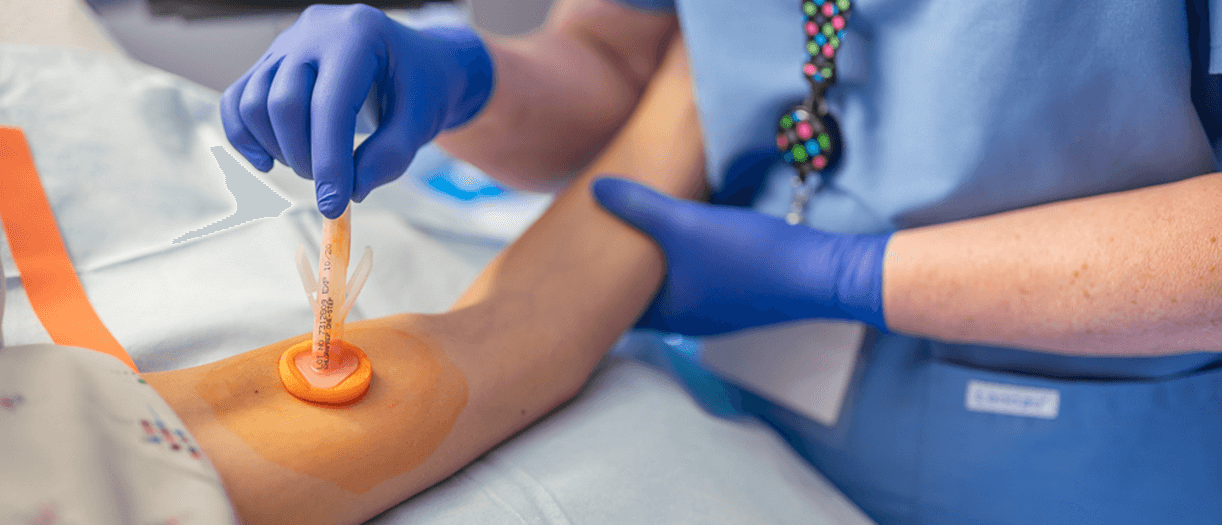8 ways aseptic technique can help prevent IV catheter-related infections
New recommendations on aseptic technique aim to improve vascular access care in the United Kingdom.
Barton A, Bitmead J, Clare S, et al. How to improve aseptic technique to reduce bloodstream infection during vascular access procedures. Br J Nurs. 2022;31(17):880-885. doi: 10.12968/bjon.2022.31.17.880
Variations in skin antisepsis practice 1
Skin antisepsis is an important part of aseptic technique. However, the practice of aseptic technique varies across trusts in the United Kingdom. There is confusion regarding procedures and terminology. The authors feel that education and practice need to be improved.
Care bundles for aseptic technique 1
A care bundle is a set of evidence-based practices that may help reduce unnecessary antibiotic use, while limiting antibiotic resistance in healthcare facilities. Care bundles for aseptic technique have been shown to help significantly reduce catheter-related bloodstream infections (CRBSIs) when combined with Aseptic Non Touch Technique (ANTT®).
Skin Antisepsis Roundtable 1
This document, based on a roundtable discussion of U.K. experts, sought to find a consensus on how to improve the quality and consistency of skin antisepsis practice.
Their objectives were to reach a consensus on1:
- Improving skin antisepsis in hospital
- Reducing variability in skin antisepsis practice
- Optimising training and compliance in skin antisepsis
- Defining the role of different devices in improving skin antisepsis
- Clarifying best practice in disinfectant application technique
- Determining methods for improving skin antisepsis integrated with the ANTT approach
- Identifying challenges to the implementation of their recommendations
“The focus of this consensus document is on how to improve aseptic technique during vascular access procedures, and associated care and maintenance of vascular access devices (VADs)1.” The recommendations set out in this document apply to the care of adults in the United Kingdom.
Expert panel’s recommendations on aseptic technique 1
- Use Medicines and Healthcare products Regulatory Agency (MHRA)-licensed 2% chlorhexidine gluconate in 70% isopropyl alcohol solution for skin asepsis except in patients with chlorhexidine allergy
- Use the applicator of MHRA-licensed 2% chlorhexidine gluconate in 70% isopropyl alcohol solution, cleaning with bidirectional (back-and-forth) strokes for up to 30 seconds, then leaving the skin to air dry for 30 seconds
- Use the ANTT Clinical Practice Framework and terminology as the standard for skin antisepsis
- Make available standardised ANTT and skin antisepsis education with 3-yearly competency assessments for all U.K. health professionals
- Include patient stories in U.K. health professional skin antisepsis education
- In ideal circumstances, make all the resources and equipment needed for skin antisepsis available to health professionals in a single pack with operational instructions
- Encourage more research to address the evidence gap on transmission of infection after skin antisepsis, such as laboratory tests to identify and model bacteria counts, and colony-forming units as a first step
- These recommendations are well suited for inclusion in a care bundle
Conclusion 1
Vascular access procedures during insertion or removal of VADs can lead to CRBSIs. Scientific evidence shows that improvements in skin antisepsis are possible with care bundles for vascular access. These interventions may be able to help reduce these kinds of infections and improve patient outcomes.
Some of the authors have been compensated by BD for the time and effort in preparing this scientific article.
References
- Barton A, Bitmead J, Clare S, et al. How to improve aseptic technique to reduce bloodstream infection during vascular access procedures. Br J Nurs. 2022;31(17):880-885. doi:10.12968/bjon.2022.31.17.880
This list of references to third-party peer-reviewed material and the sites they are hosted on are provided for your reference and convenience only, and do not imply any review or endorsement of the material or any association with their operators. The Third-Party References (and the Web sites to which they link) may contain information that is inaccurate, incomplete, or outdated. Your access and use of the Third Party Sites (and any Web sites to which they link) is solely at your own risk.
BD-75122




